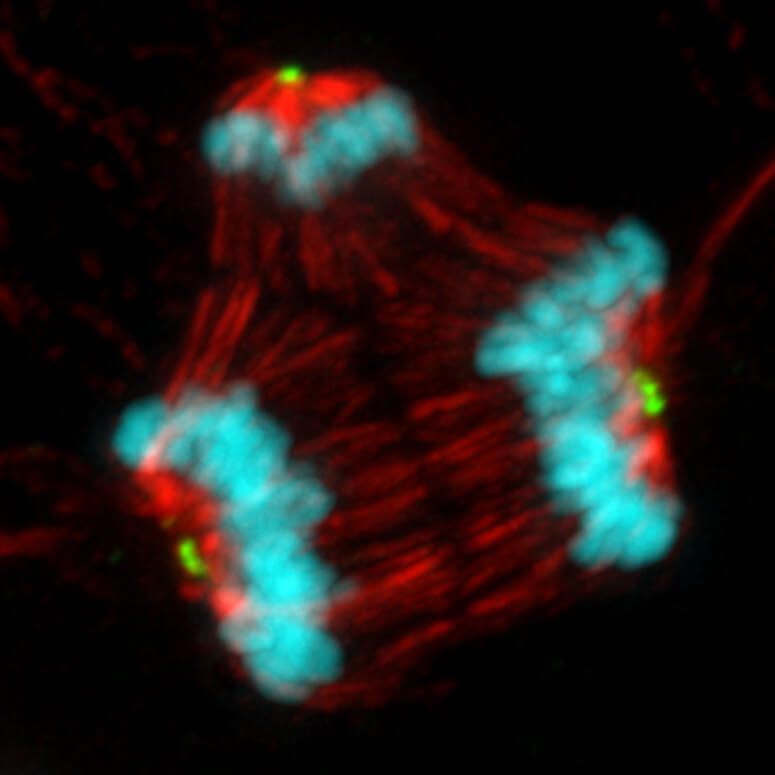MADISON, Wis. — Chemotherapy has saved the lives of countless cancer patients, but the treatment approach is far from effective for everyone. Now, researchers from the University of Wisconsin–Madison say chemotherapy may not be reaching its full potential, at least in part due to a fundamental misunderstanding by doctors when it comes to how some of these common cancer drugs fight tumors.
For decades, scientists and doctors alike have believed that the class of drugs called microtubule poisons treat cancerous tumors by halting mitosis — the division of cells. This latest work, however, reports microtubule poisons don’t actually stop cancer cells from dividing. So, what do they do? Study authors explain these drugs change mitosis, and in some cases, those changes are severe enough to kill off new cancer cells and promote cancer regression.
Cancers grow and spread throughout the body due to cancerous cells dividing and multiplying indefinitely. Normal cells, meanwhile, are limited in the number of times they can split into new cells. The long-held belief among scientists that microtubule poisons stop cancer cells from dividing was based on lab studies that appeared to demonstrate as much.
This latest study was led by Beth Weaver, a professor in the departments of oncology and cell and regenerative biology, in collaboration with Mark Burkard from the departments of oncology and medicine. The study also received support from the National Institutes of Health. The research team believes their work expands on previous revelations the group uncovered regarding a specific microtubule poison called paclitaxel. Prescribed under brand names including Taxol, paclitaxel is usually used to treat common malignancies, like tumors in the lungs or ovaries.
“This was sort of mind-blowing,” Weaver says about the previous research in a university release. “For decades, we all thought that the way paclitaxel works in patient tumors is by arresting them in mitosis. This is what I was taught as a graduate student. We all ‘knew’ this. In cells in a dish, labs all over the world have shown this. The problem was we were all using it at concentrations higher than those that actually get into the tumor.”
Researchers wanted to find out if other microtubule poisons work in a similar manner to paclitaxel, or in other words, not by stopping mitosis but by changing it. That question holds major implications for modern medicine as scientists continue their ongoing search for new cancer treatments. Drug discovery efforts largely hinge on identifying, reproducing, and improving upon the mechanisms believed to be responsible for a compound’s therapeutic effect. So, it’s vital that scientists hold an accurate understanding of how current drugs operate.

While microtubule poisons are no panacea for all cancers, they are effective for many patients. As such, researchers have long sought to develop other therapies that mimic what they thought the drugs accomplished. These efforts are still ongoing today despite all past attempts to identify new compounds that treat cancer by stopping cell division eventually arriving at frustrating dead ends.
“There’s still a lot of the scientific community that’s investigating mitotic arrest as a mechanism to kill tumors,” Prof. Weaver adds. “We wanted to know — does that matter for patients?”
In collaboration with Burkard, study authors analyzed tumor samples gathered from a group of cancer patients who received standard anti-microtubule chemotherapy at the UW Carbone Cancer Center. Researchers measured just how much of the drugs made it into the tumors, and then studied how the tumor cells responded. This led to the finding that while cells continued to divide even after being exposed to the drug, they did so in an abnormal fashion. This abnormal cell division can lead to tumor cell death.
Normally, a cell’s chromosomes are duplicated prior to the two identical sets migrating to opposite ends of the cell mitosis in a process known as chromosomal segregation. One set of chromosomes is sorted into each of the two new cells during this process.
That migration usually occurs due to the chromosomes being attached to a cellular machine known as the mitotic spindle. Spindles are constructed from cellular building blocks called microtubules. Normal spindles have two ends, called spindle poles.
Researchers ultimately found that paclitaxel and other microtubule poisons promote abnormalities that lead cells to form three, four, or sometimes even five poles during mitosis while continuing to make just one copy of chromosomes. These poles then attract the two complete sets of chromosomes in more than just two directions, subsequently scrambling the genome.
“So, after mitosis you have daughter cells that are no longer genetically identical and have lost chromosomes,” Prof. Weaver comments. “We calculated that if a cell loses at least 20% of its DNA content, it is very likely going to die.”
In summation, this work reveals the likely underlying reason why chemotherapies are so effective for many patients, yet not as helpful for others. This study also helps explain why attempts to find new chemo drugs based solely on stopping mitosis have been so unfruitful for so long.
“We’ve been barking up the wrong tree,” she concludes. “We need to refocus our efforts on screwing up mitosis — on making chromosomal segregation worse.”
The study is published in the journal PLoS Biology.
You might also be interested in:
- ‘We could see it happening’: Scientists witness how cancer cells can beat chemotherapy
- Is chemotherapy causing breast cancer survivors to age faster?
- Implant delivers chemotherapy drugs to brains of glioblastoma patients for the first time

